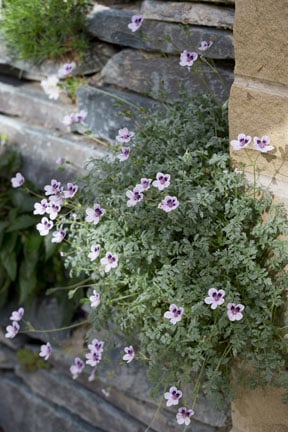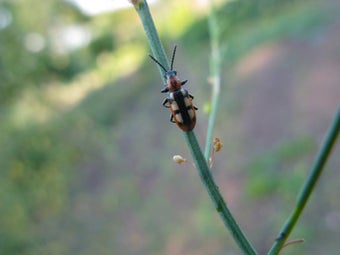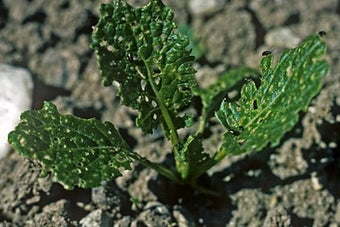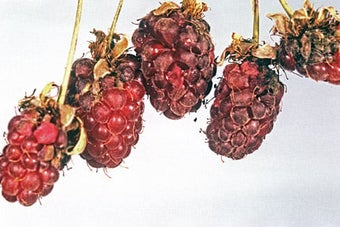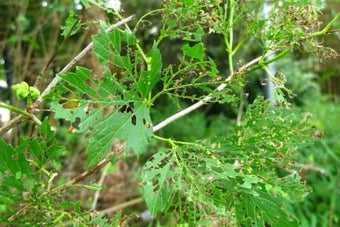
Quick facts
Common name - Pollen beetles
Scientific name - Meligethes species
Plants affected - Many flowers, including those of sweet pea, runner bean, narcissus and rose
Main cause - Small dark metallic green beetles
Timing - March-April and July-August
What are pollen beetles?
Pollen beetles are small green, bronzy or black shiny beetles that visit the flowers of a wide range of ornamental plants and vegetables, where they feed on pollen. They rarely cause damage in gardens and are part of garden wildlife.
Pollen beetles belong to the beetle family Nitidulidae, which also includes the sap beetles. There are about 90 species of beetle in this family, many feed on fungi, sap runs or dried carrion. About half the nitidulid beetles are pollen beetles belonging to the subfamily Meligethinae. Most are dark in colour and they feed in flowers and flower buds as larvae. The adults feed on pollen often of a greater range of plants that the larvae, generally they go unseen in gardens the exceptions are Meligethes aenus and M. viridescens. These two species can damage commercial brassica crops such as oilseed rape; in gardens they can appear in large numbers especially when the main host is harvested, although they rarely cause damage.
More information on Nitidulidae from UK Beetles
Symptoms
Pollen beetles are about 2-3 mm long and are black or greenish bronze with clubbed antennae. They crawl around in flowers as they feed on the pollen. Common species are Meligethes aeneus and M. viridescens, both of which breed in the flowers buds of brassica seed crops, including oilseed rape. Large populations of pollen beetles are more likely to occur in rural areas in the vicinity of oil-seed rape crops.
None of the 36 species of pollen beetle in Britain cause damage to garden plants and so can be considered part of the biodiversity gardens support. They all develop in the flower buds of wild flowers or agricultural crops. The adult beetles are much less fussy about the flowers they visit and they eat the pollen of a wide range of plants. Yellow flowers seem to be particularly attractive. Pollen beetles are not directly harmful to the blooms and they may assist with pollination. The beetles can be brought indoors on cut flowers, once inside the beetles start wandering around and head towards windows.
Management
The presence of pollen beetles in flowers should be treated as part of garden biodiversity while they are in the garden. Cut flowers can be made relatively beetle-free by shaking or tapping them out of the blooms. Where this is not possible, place the cut blooms in a vase or bucket and put it in a shed or garage near an open door or window for a few hours during the day. The beetles will be attracted to the brighter light coming from outside and will leave the blooms. On a small scale it should be possible to prevent beetles getting into some show blooms, such as roses, by enclosing the flowers in bags made from a fine meshed material such as nylon tights or muslin. This needs to be in place when the flowers are still in tight bud. Growers of sweet peas and other flowers for exhibition purposes sometimes erect tents of insect proof mesh.
Biology
Pollen beetles overwinter as adults in sheltered places. They emerge in spring and can often be found in Narcissus (daffodil) flowers at that time. The females lay eggs in the flower buds of suitable host plants, which are various wild flowers and some agricultural crops, such as oil seed rape and other brassicas grown for seed. No garden flowers or vegetables are damaged in this way. When the larvae have completed their feeding inside flower buds, they go into the soil to pupate. Adult beetles emerge in July-August and seek out flowers where they feed on pollen.
